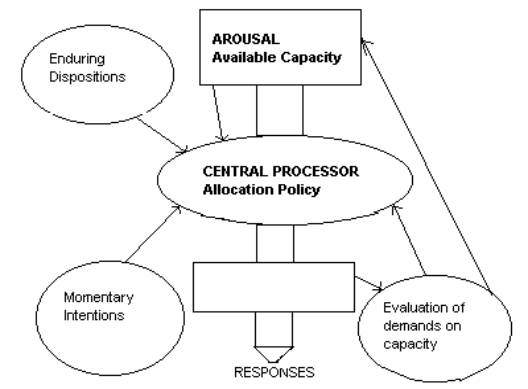Kahneman(1973)
Model of Attention

Kahnemanís
model of divided attention proposes a model of attention which is based around
the idea of mental efforts. This is a description of how demanding the
processing of a particular input might be.
Some
tasks might be relatively automatic(in that they make few demands in terms of
mental effort) despite the fact they have a high information load.
Therefore
Kahnemann proposes that
1)Some
activities are more demanding(and therefore require more mental effort than
others
2)The
total available processing capacities may be increased or decreased by other
factors such as arousal
3)Several activities can be carried out at the same time , provided that their total effort does not exceed the available capacity
4)Rules
or strategies exist which determine allocation of resources to various
activities and to various stages of processing. Attentional capacity will
therefore reflect the demands made at the perceptual level, the level at which
the input is interpreted or committed to memory and the response selection stage
Comment
Kahneman
thus believes in the existence of a Central Processor which operates a Central
Allocation Policy, constantly evaluating the demands made by each task and
adjusting attention accordingly.
Critics
of this model have suggested that because of our ability to develop skills that
it becomes impossible to accurately judge the
limits or capacity of the processing system.
Allport(1980)
suggests that interference occurs when similar tasks compete for the same
processing mechanisms , yet dissimilar tasks do not create the same level of
mutual interference, therefore the individual can accommodate both